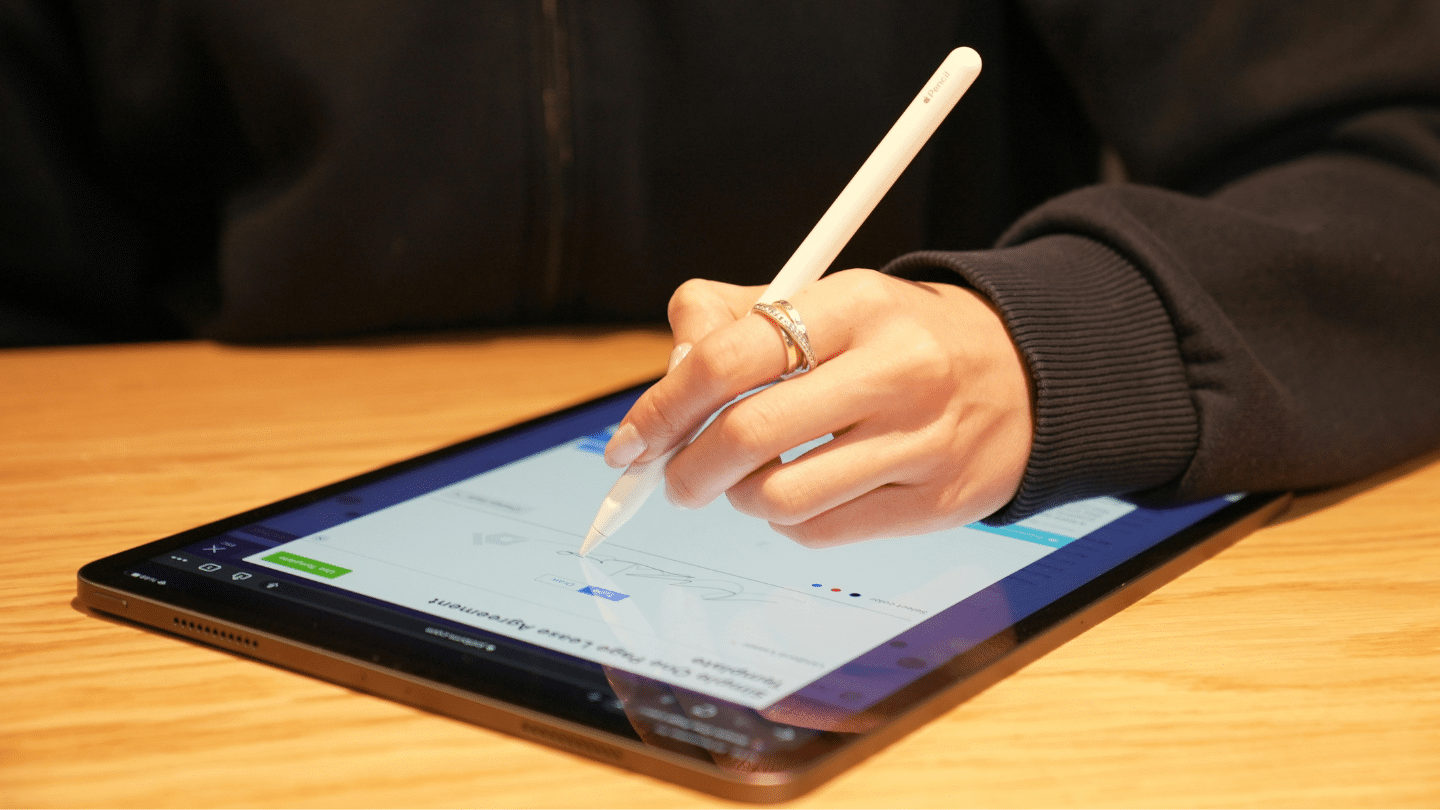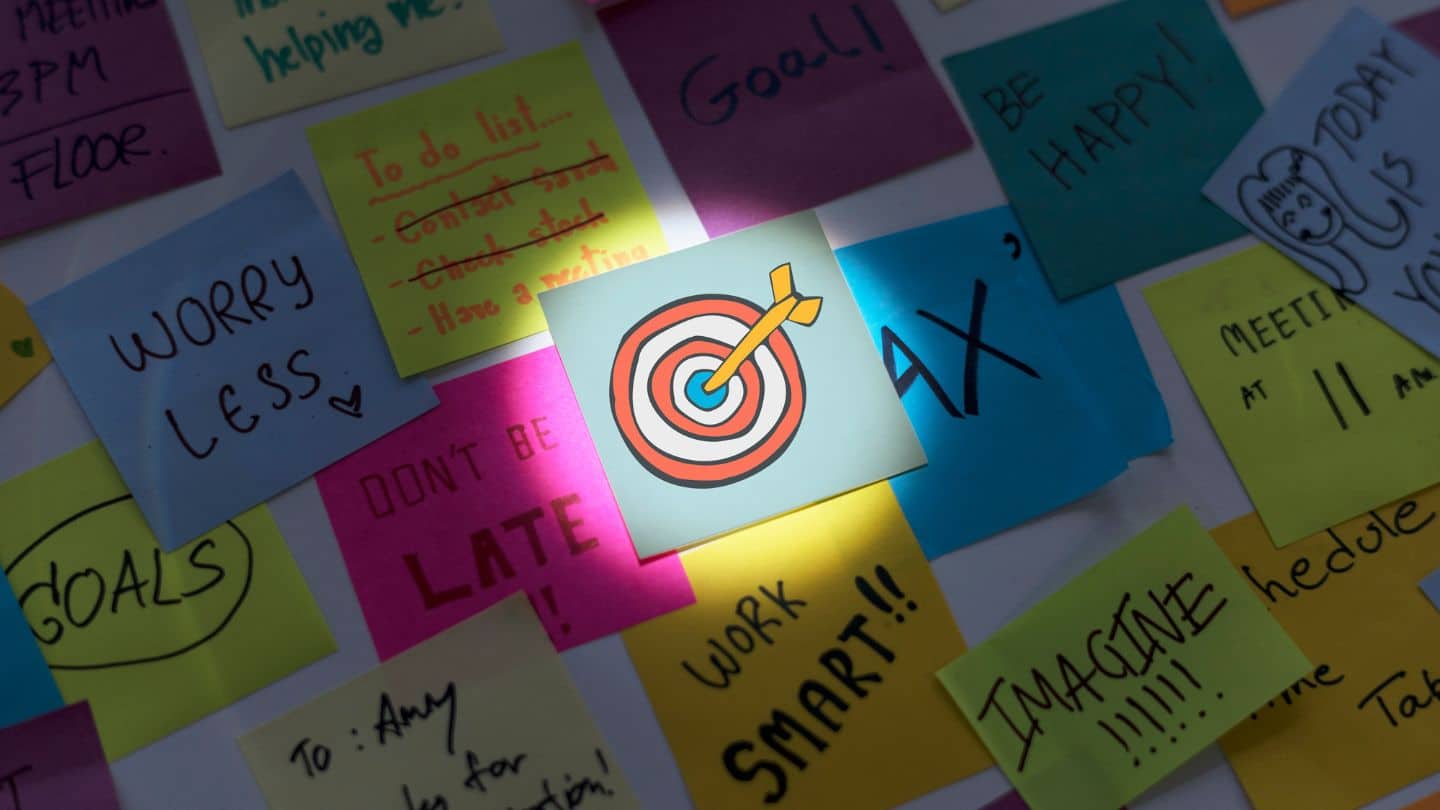The time is ripe for recovery from COVID, with varying degrees of commitment depending on the sector. But the COVID-19 health crisis will certainly have changed the way we sell in the long term. What has changed in concrete terms? How should we approach the post-crisis period? And what levers should be used to rebuild growth? This article provides some answers.
Sommaire
Going digital to adapt your business strategy to the post COVID era 19
The importance of digital channels for B2B companies has grown considerably in recent years and has increased dramatically since the beginning of the COVID-19 crisis.
On average, sales managers place about twice the importance on digital channels than before (Table 2), with B2B decision-makers in Spain and the UK rating them even more important (almost triple their previous importance).
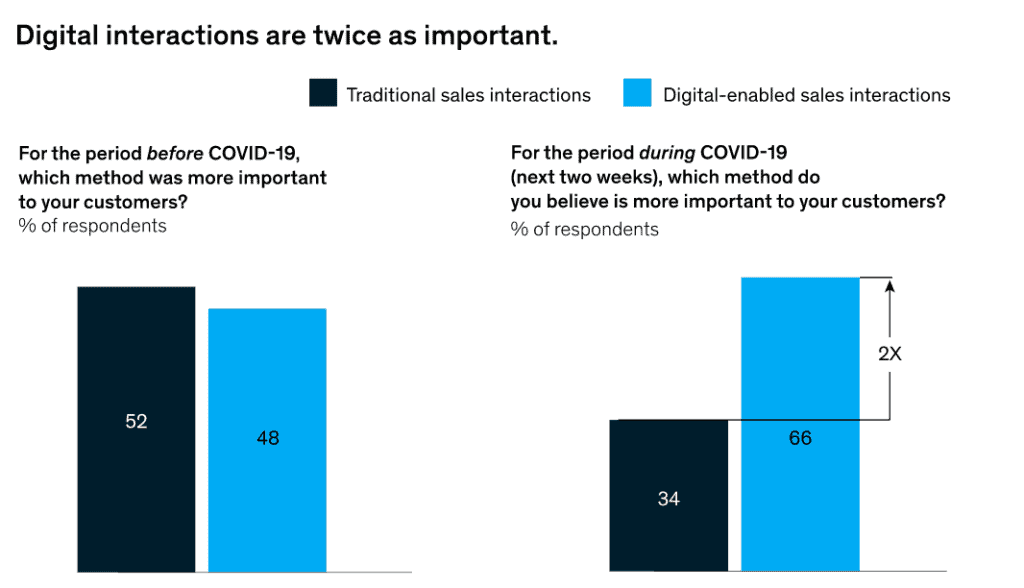
Source: McKinsey B2B Decision Maker Pulse Survey, 7 April 2020
The advent of “self-service” pathways
The changing importance of digital interactions is reflected in consumer behaviour. When searching for products, customers’ preference for digital interactions has jumped considerably.
Mobile apps and social networks show their strongest growth since 2019. Mobile apps are twice as important for product search among Chinese shoppers than in the UK or Germany.
Interestingly, the importance of a supplier’s web page has not changed much, probably because customers were already actively using suppliers’ websites for this part of their buying journey.
When making a purchase, shoppers indicated a strong preference for self-service. This trend continues a strong preference for ‘self-service’ shopping journeys at each stage of the customer decision process, which we began tracking in 2016 (Table 3).
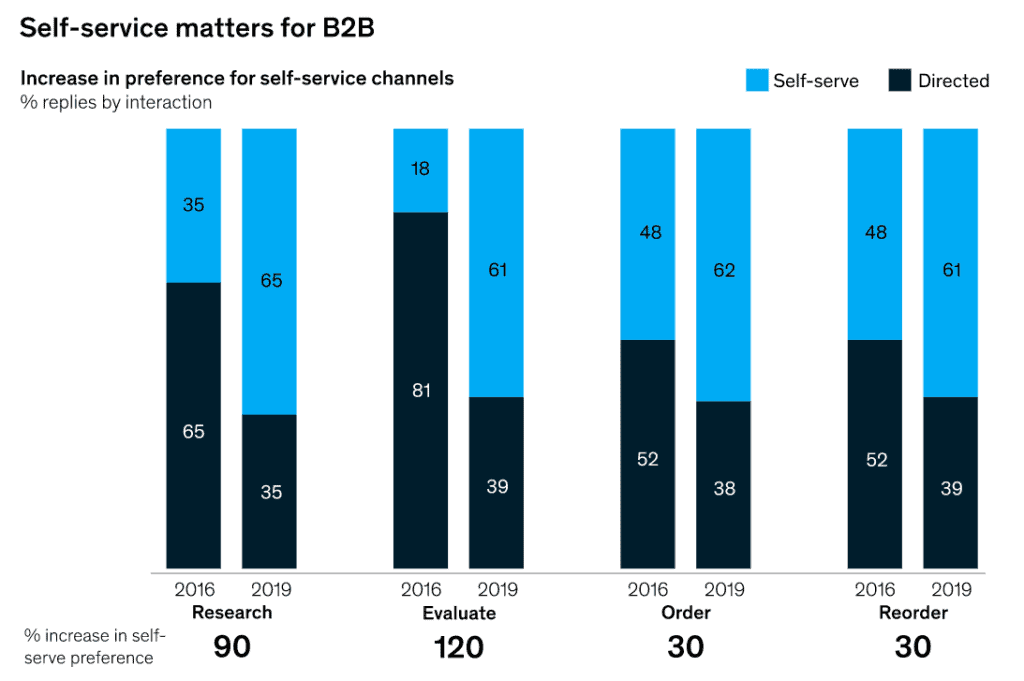
Source: OSI Results of McKinsey ‘s B2B customer buying research, 2016 & 2018/2019.
How to improve your customers’ digital experience
Here are five actions to improve your customers’ digital experience
- #1 Enhance the self-service options you already have. On your website, make sure that shoppers can easily find information, compare options and make purchases.
- #2 Fix bugs quickly on your websites and mobile applications. Monitor technical issues in real time and fix them as soon as they appear. Tools that work perfectly are the key to a smooth customer experience.
- #3 Keep human interaction for critical moments in the journey. When a potential customer contacts you by phone, video conference or chat, be responsive and create a human connection.
- #4 Think like a consumer. Make sure your e-commerce channels offer a B2C experience for each product or service. Link digital sales goals to your overall sales goals.
- #5 Measure your progress. Are you a primary or secondary supplier? What is your loyalty score, your customer satisfaction rate? Does your performance vary between digital and face-to-face interactions?
The transition to sedentary commercial organisations
Confinement has prompted organisations to expand teleworking considerably. B2B salespeople have responded with surprising speed: about 90% of them work on video conferencing tools or by telephone.
In Europe, Spain and the UK are the countries where this development has been most significant. Not surprisingly, the trend is more pronounced in some sectors than in others: in technology, media and telecoms, it is almost 100%.
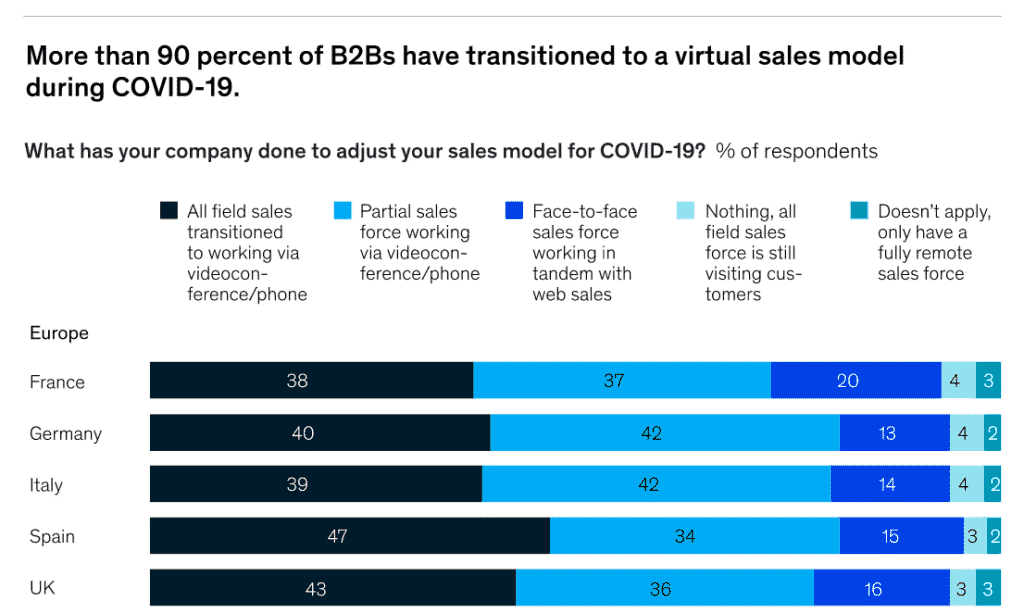
Source: McKinsey B2B Decision Maker Pulse Survey, 8 April 2020
How to adapt your sales processes to a sedentary organisation
Here are 4 simple actions to improve this transition:
- #1 Switch your face-to-face salespeople to a digital solution. Use digital channels to enhance your sales and service capabilities, converting chatbots into live chats with your sales people.
Equip your sales people with digital tools (Skype, Zoom, WebEx, etc.), train them to hold meetings with customers via video conferencing. Create a “group” of experts in digital tools to help salespeople use the new tools and respond to customer requests.
- #2 Prioritise your pipeline and provide information to salespeople. Set up dedicated time slots and customer relationship management (CRM) sessions for sales to follow up on these leads.
Tailor digital marketing messages with a clear focus on the customer.
Use managers to support pending proposals to help salespeople and reassure customers. - #3 Strengthen your relationship with your customers through traditional and digital channels. Organise virtual product demonstrations for several customers with telephone follow-up by your sales staff.
Also plan virtual lunches or information sharing sessions with selected customers.
Don’t hesitate to email relevant content that reflects your customers’ needs and current reality. - #4 Use any free technical and marketing capacity to solve self-service problems. For companies that have the ability to reallocate resources, take strong measures that will directly benefit your customers.
For example, eliminate unnecessary click-to-order or click-to-demand steps for an optimised online shopping journey.
Please feel free to use the resources we have made available to you
- Find out how you can change your B2B sales processes to adapt to the post COVID era.
- We have compiled 40 business practices to help you improve your performance.
- Best practices for a sedentary sales organisation.
- Why & how to prepare a sales action plan
Customisation is more important than ever
The health crisis has encouraged the use of email as a means of prospecting. This graph, taken from a Hubspot study, shows that the volume of email prospecting gradually increased during the month of March. The curve of the response rate to these emails, on the other hand, follows the opposite trajectory.
As the volume of emails increases, response rates decrease as it becomes more complicated to engage your targets. This is why the personalisation of your prospecting emails becomes even more important than before.
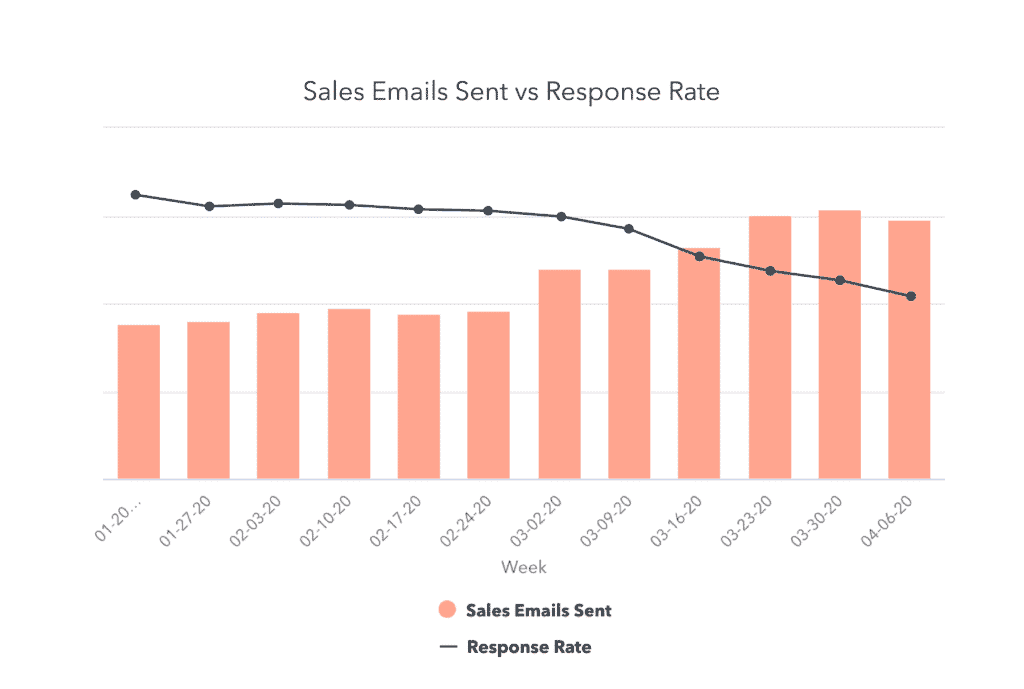
Source: Hubspot survey of 70,000 customers, 16 April 2020.
How to adapt your prospecting?
Here are 4 tips on how to best adapt your business development strategy:
- #1 Don’t panic. The first reason we see email volumes increase so much is because sales pipelines are emptying, and a sense of panic sets in, with much less accurate prospecting. Don’t put your brand at risk, and stay efficient.
- #2 Clean up your databases. Keep in mind that it is important to have very up-to-date and high quality prospecting files. The quality of your data will directly impact the performance of your campaigns.
- #3 Focus on education, not promotion. The increase in website traffic and email marketing open rates suggests that customers are still looking to engage with businesses. Your customers may be more interested in learning and education at the moment. Instead of stopping to promote your products and services in times of crisis, focus on maintaining a long-term relationship. Identify areas where you can help your customers today, without asking for anything in return.
- #4 Optimise your lead capture. Instead of trying to build a lead pipeline with cold leads, work better with those who are already interested in you. So start with those who visit your website using chat, or popups. You can also offer them content available for download in exchange for an email, phone number and their name & position.
Please feel free to use the resources we have made available to you
- Discover 40 powerful email objects to inspire you
- 8 facts about email marketing
- Find our 6 tips for writing the perfect prospecting email.

